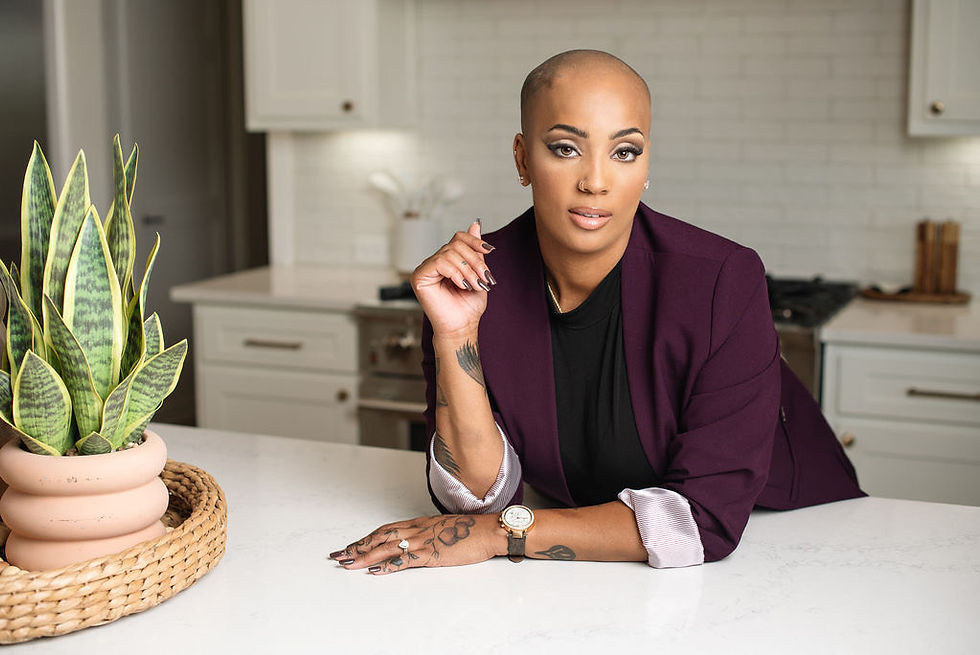Nia Renee on Turning Pain Into Power
- Coffe' Iman

- Oct 6
- 3 min read
In recognition of Domestic Violence Awareness Month in October, Coffea Magazine profiles Coach Nia Renee, a certified speaker and coach whose work centers on survivor healing, boundary setting, and empathy centered leadership. We hope her story provides a window into her practices to help others rebuild after abuse.

The Origin of Pain
From the very start, Nia Renee’s world was defined by turmoil. For years, the abuse became her normal. She carried the weight of pain and confusion into adulthood, unknowingly attracting relationships that mirrored the same dysfunction she experienced as a child.
I am a survivor of childhood abuse, childhood sexual assault, rape, domestic violence, narcissistic abuse, you name it. Abuse in all the spectrum of what it is. I endured it since the age of one through the age of 26.
But it wasn’t until Nia Renee met her most narcissistically abusive ex that she truly hit rock bottom. His manipulation and control slowly eroded her sense of self. She was trapped in a cycle of emotional and psychological abuse that left her feeling empty and powerless.
During the same broader period she received diagnoses for rare brain conditions and underwent six brain surgeries. Healing from abuse while recovering from brain operations demanded that she rebuild both physical and emotional trust in her body. Those experiences ultimately informed her commitment to help other survivors reclaim power and design lives that are not defined by trauma.

Choosing Healing Over Habit
After building an initial base of support, Nia Renee set a six month period to focus entirely on herself. She paused dating and romantic conversations, shifted attention to identity apart from survival, and used the time to define a different path forward. She credits that concentrated season with breaking a long running cycle and creating momentum that she sustained.
When discussing forgiveness, Nia Renee referenced, Dr. Ramani Durvasula, a leading expert on narcissistic abuse.
“You don’t have to forgive someone in order to heal,” she said. “But you do have to forgive yourself for the things that you did in order to survive.”
Nia Renee approached recovery with a plan that combined weekly talk therapy and weekly EMDR therapy, a mental health treatment technique. This method involves moving your eyes a specific way while you process traumatic memories. EMDR’s goal is to help you heal from trauma or other distressing life experiences. For a year she maintained both therapies in parallel. She also chose a male psychotherapist to confront fear and mistrust related to men that had grown out of earlier harm. Over time she adopted day to day strategies with her talk therapist while using EMDR to process specific traumatic events and bodily responses associated with them.
Sharing the Power
Nia Renee’s healing journey inspired a movement. “I started my business as a blog,” she said. “I was teaching people how to love a battered woman, because I believed they didn’t know how to be in a relationship with someone who had endured trauma.”
She built How to Love a Battered Woman LLC with two connected tracks. One serves survivors directly through coaching programs that support abuse recovery, preparation for healthy relationships, and self centered healing. The other focuses on organizations through a speaking practice that positions empathy as a leadership requirement. She works with companies and groups to highlight how toxic behavior outside the office often surfaces at work and to help leaders put empathy at the center of culture and decision making.
When asked what message she wants to leave with readers, Nia Renee smiled. “Drink some water, get some rest, and don’t let nobody’s dusty a** child treat you any kind of way.”

Her humor and honesty capture the strength of someone who has faced every storm and still chooses light.
If you or someone you know is navigating abuse, consider connecting with confidential services and local organizations in your area. Nia Renee’s guidance points to hotlines, shelters, and nonprofits as immediate places to start while you assemble a longer term plan for safety and healing.
You can also read more about her journey on her website:
View the complete interview on our YouTube Channel:



